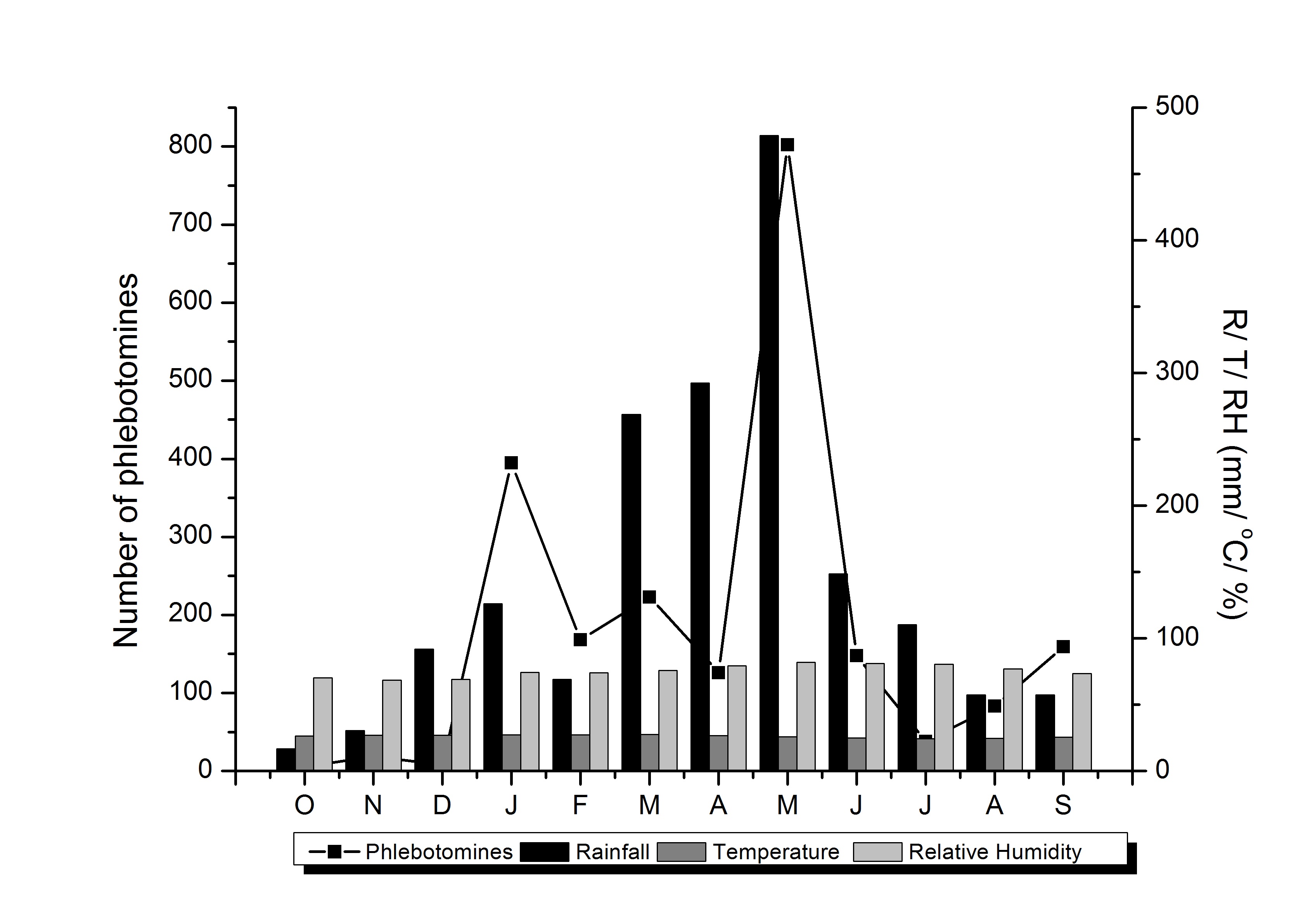Abstract
Phlebotomines have worldwide distribution with many species present in Brazil, including the northeastern region, where the fauna is very diverse. The aim of this study was to identify the sandfly fauna in an area endemic for American cutaneous leishmaniasis (ACL) in the state of Pernambuco. Sandflies were caught on three consecutive nights every month from October 2015 to September 2016, from 5 pm to 5 am, using seven light traps of Centers for Disease Control (CDC) type. Females were identified and used for molecular Leishmania detection. A total of 2,174 specimens belonging to ten species were collected: Lutzomyia choti (88.2%; 1,917/2,174) was the most abundant species, followed by Lutzomyia whitmani (8.1%; 176/2,174) and Lutzomyia sordellii (1.5%; 33/2,174). The majority of the specimens were collected in peridomestic areas (64.1%; 1,394/2,174) and during the rainy period. All the samples examined were negative for Leishmania spp. The presence of Lutzomyia whitmani indoors and in peridomestic areas indicates that the inhabitants of this area are exposed to the risk of infection by the parasites responsible for ACL.
Keywords:
Lutzomyia; Leishmania; vectors

 Thumbnail
Thumbnail
 Thumbnail
Thumbnail

